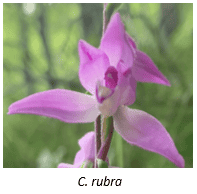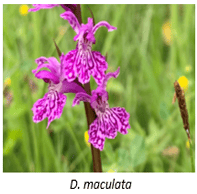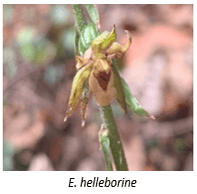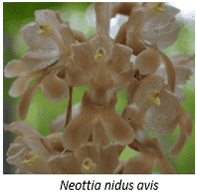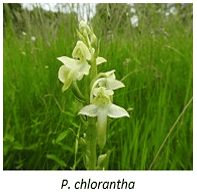MADONNA DELL’ALTARE:
The prevailing vegetation in this locality is that of a mesophyll-mixed cerreta. The dominance of the turkey oak (Quercus cerris) is accompanied by numerous other tree species such as the hornbeam (Carpinus betulus), beech (Fagus sylvatica subsp. sylvatica) and various maples (Acer campestre, A. opalus subsp. obtusatum). In the shrub layer, shrubs such as gland bramble (Rubus hirtus), holly (Ilex aquifolium), daphne laurella (Daphne laureola) and Rosa cavallina (Rosa arvensis) are abundant.
The forest clearings are dominated by Bromospis erecta and/or Brachypodium rupestre, with the presence of Achillea collina, Lotus corniculatus subsp. corniculatus, Prunella vulgaris subsp. vulgaris.
The forest component of the landscape is better represented and consists mainly of hornbeam (Ostrya carpinifolia) in which, in addition to hornbeam (Fraxinus ornus subsp. ornus) and field maple (Acer campestre) can be found. In the area, there is an extensive beech forest, while on opposite slopes there is extensive reforestation with a predominance of conifers.
Well represented in the open spaces are herbaceous formations belonging to the xerobromete, while in the rockier situations aspects of chamaephyte, and garigue prevail.
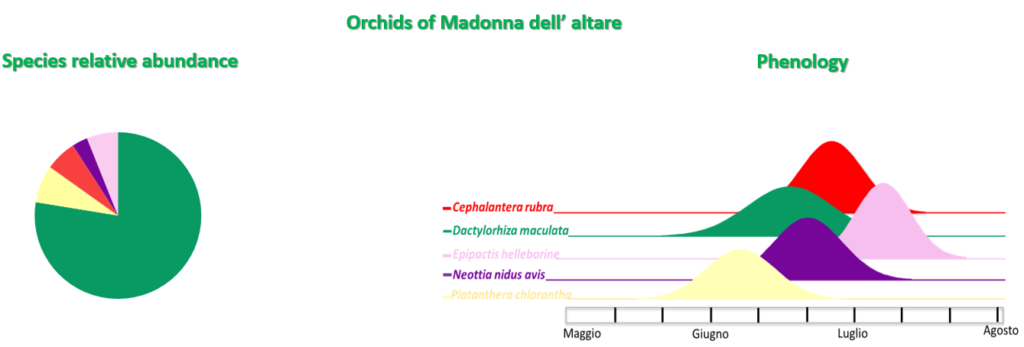
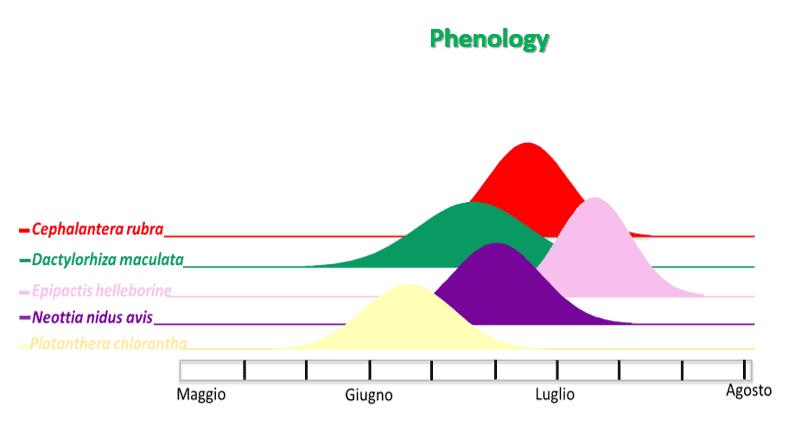
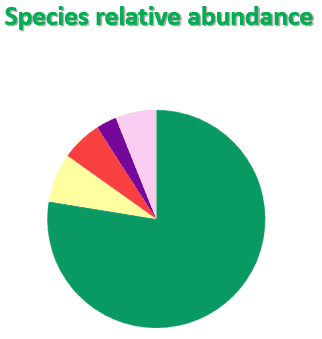
Description of the species
Cephalanthera rubra


Cephalanthera rubra
Etymology: the specific epithet rubra is derived from latin (red) due to the colour of the flowers.
Description: plant up to 70 cm high. Scape slender, leaves are lance-shaped, dark green with very pronounced veins. Inflorescence slender and may consist of 3 to 10 flowers. The flowers are large, open, and intense pink to purple. Sepals and petals acute, the median sepal is connate with the petals. Lip is smaller than the sepals, the base is very pale and the margins are deep pink. The sometimes-pink lateral lobes are characterized by yellow veins arranged in a fan shape. Without spur. Gynostemium elongated, purple in colour.
Dactylorhiza maculata


Dactylorhiza maculata
Etymology: the specific epithet refers to the appearance of the labellum.
Description: plant up to 100 cm high. Scape thin, green, and often purplish at the apex. Leaves dark green, elliptical, cauline are characterized by brown spots only on the upper page. Inflorescence dense, conical, and characterized by numerous flowers. Sepals are purple-purple characterized by a series of purple lines and punctuation, the middle one joined with the petals to form a helmet. Lip broad, and 3-lobed, with the median lobe, rounded clear at the base with a purple tinge starting in the centre and intensifying at the margin, characterized like the tepals by purple lines and dots. Spur cylindrical and descending. Gynostemium obtuse.
Epipactis helleborine
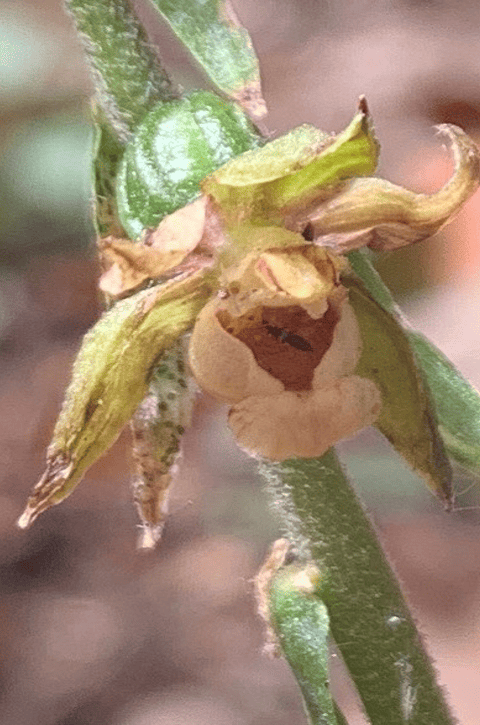
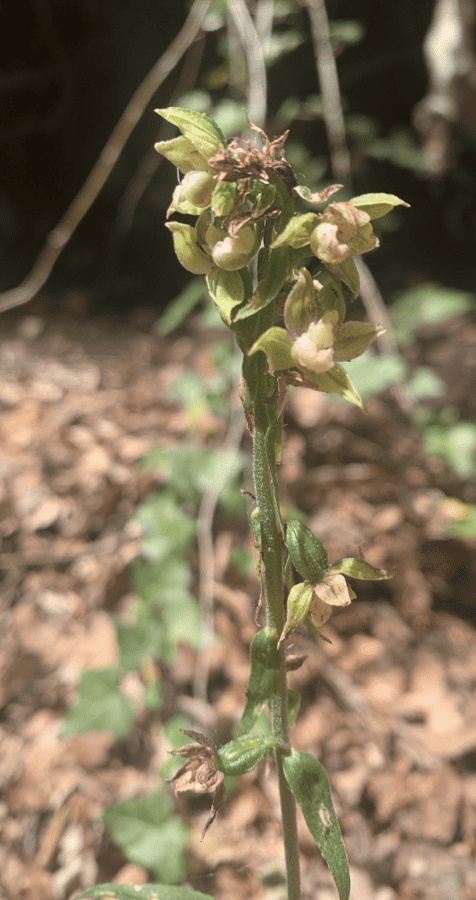
Epipactis helleborine
Etymology: the epithet helleborine derives from the latin helleborus from the shape typical veratrum-like of the leaves.
Description: plant up to 100 cm high. Stem green, erect, often the lower part is pinkish. Leaves up to 10 are spiralled. Inflorescence, compact and elongated can consist of more than 100 flowers. Flowers, semi-open or open are slightly pendulous and can be green or pinkish. Sepals are ovate and narrow-shaded pink with greenish veins. Petals, on the other hand, are a more intense colour. Lip shorter than the sepals greenish-white towards the outside, and blackish-brown inside. Gynostemium short.
Neottia nidus avis
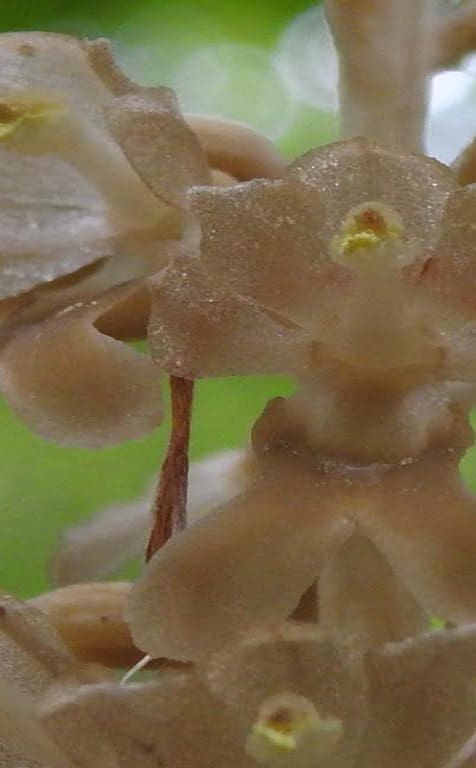
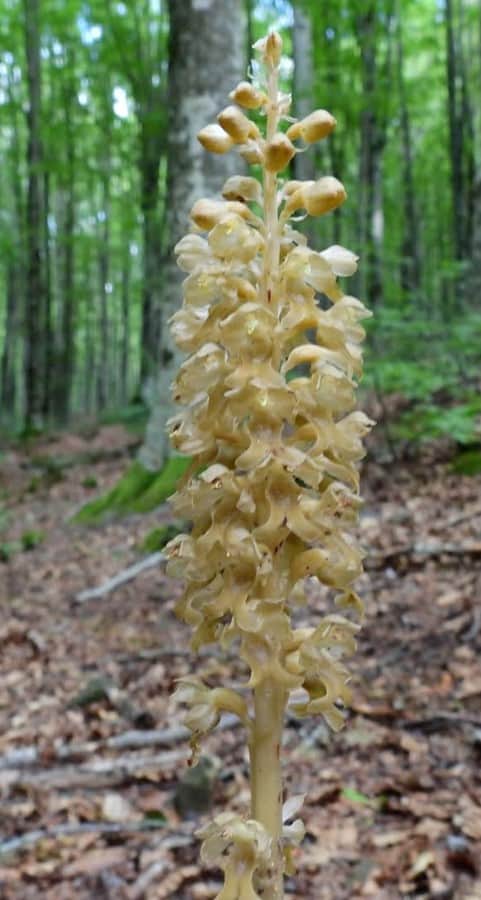
Neottia nidus avis
Etymology: neottia derives from the greek neotteia (nest) and nidus avis from latin (nest, bird) the name was given to it because of the appearance of the root system.
Description: plant up to 50 cm high. Scape robust yellowish-brown rarely white, completely devoid of chlorophyll. Leaves are sheathing, and lanceolate. Inflorescence dense and cylindrical with 15-40 flowers. The flowers are large and have a slight honey scent, the distribution of the flowers is denser at the apex, while at the base the flowers are spaced a part. Lip pendent with a domed base, 2-lobed, and the lobes are divergent and enlarged. Without spur. Gynostemium is long and white.
Platanthera chlorantha
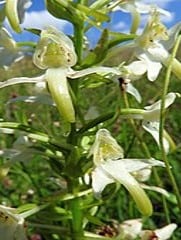
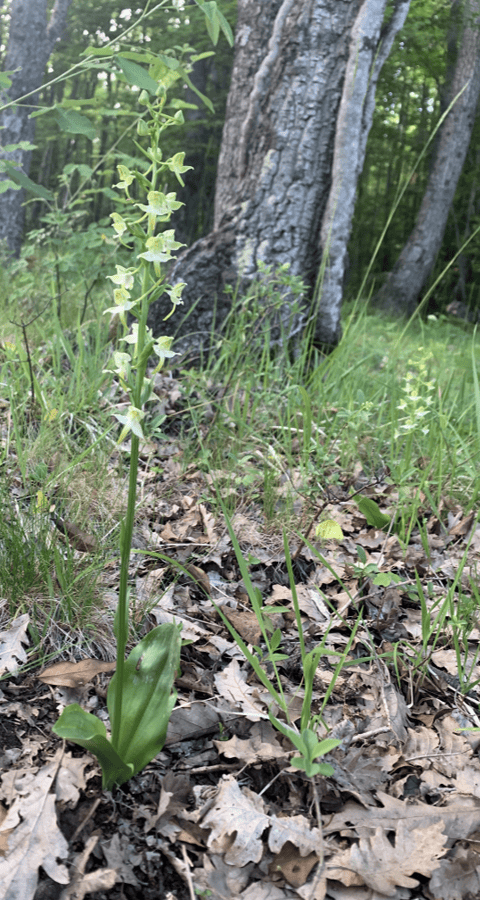
Platanthera chlorantha
Etymology: the epithet chlorantha derives from the greek chloros (green) and anthos (flower) from to the typical colour of the flowers.
Description: plant up to 50 cm high. Scape robust with 2 basal, glossy green leaves forming a basal rosette. Inflorescence loss and cylindrical consisting of 8-30 evening flowers. Sepals are oval and sickle-shaped, the median in close contact with the petals to form a helmet. Lip is tongue-shaped and pendent, the base of the lip is white and towards the apex it is yellowish-green. Spur claviform with obtuse apex, longer than the ovary.

